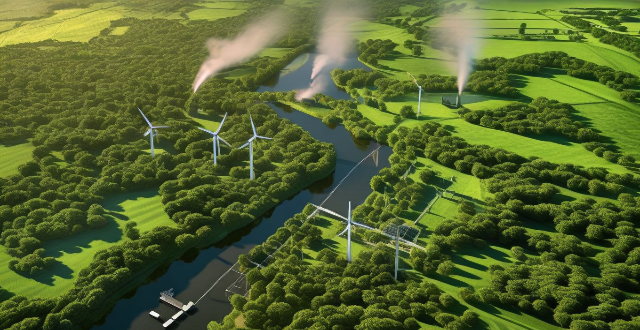Renewable energy sources are naturally replenished and provide a sustainable way to generate power without depleting the Earth's natural resources or contributing to climate change. Solar energy is harnessed through photovoltaic systems, solar water heaters, and concentrating solar power. Wind energy is captured by onshore and offshore wind turbines. Hydropower is generated through dam-based and run-of-river systems. Geothermal energy is tapped into via dry steam, flash steam, and binary cycle power plants. Bioenergy includes biomass combustion, anaerobic digestion, and biofuels. These sources offer clean alternatives to fossil fuels and play a crucial role in reducing greenhouse gas emissions.

Most Common Types of Renewable Energy Sources
Renewable energy sources are those that can be naturally replenished, such as sunlight, wind, rain, tides, waves, and geothermal heat. These sources provide a sustainable way to generate power without depleting the Earth's natural resources or contributing to climate change. Here are some of the most common types of renewable energy sources:
Solar Energy
- Photovoltaic (PV) Systems: These systems convert sunlight directly into electricity using solar panels made up of silicon cells. They can be installed on rooftops or in large solar farms.
- Solar Water Heaters: These devices use solar collectors to capture heat from the sun and transfer it to a fluid, which then heats water for household or industrial use.
- Concentrating Solar Power (CSP): This technology uses mirrors or lenses to focus a large area of sunlight onto a small area, generating high temperatures that can produce steam to drive turbines and generate electricity.
Wind Energy
- Onshore Wind Turbines: These are wind turbines built on land, often in clusters known as wind farms. They are typically mounted on tall towers to take advantage of higher wind speeds at greater heights.
- Offshore Wind Turbines: Similar to onshore wind turbines, but located in bodies of water such as lakes, rivers, and oceans. Offshore wind farms can take advantage of stronger and more consistent winds found over open water.
Hydropower
- Dam-based Hydropower: This is the traditional form of hydropower, where a dam is built across a river to store water. The potential energy from the stored water is then used to spin turbines and generate electricity when released through penstocks.
- Run-of-river Hydropower: Unlike dam-based hydropower, run-of-river systems do not require the construction of large reservoirs. Instead, they divert part of a river's flow through a turbine to generate electricity while allowing the rest of the flow to continue downstream unimpeded.
Geothermal Energy
- Dry Steam Power Plants: These plants tap into naturally occurring steam just below the Earth's surface. The steam is used directly to turn turbines and generate electricity.
- Flash Steam Power Plants: These facilities use geothermal resources that are hot but not hot enough to create steam on their own. Water is pumped down into these resources, where it is heated and turns into steam, which then drives turbines.
- Binary Cycle Power Plants: For lower temperature geothermal resources, binary cycle plants use a secondary fluid with a lower boiling point than water to convert the heat into mechanical energy and ultimately electricity.
Bioenergy
- Biomass Combustion: This involves burning plant matter or organic waste materials to produce heat, which can then be used to generate electricity through steam turbines.
- Anaerobic Digestion: In this process, microorganisms break down organic matter in an oxygen-free environment, producing biogas that can be used for heating or converted into electricity.
- Biofuels: These are liquid fuels derived from biomass, such as ethanol produced from corn or sugarcane, and biodiesel made from vegetable oils or animal fats. Biofuels can be used in existing vehicles with minimal modifications or blended with conventional fuels.
These renewable energy sources offer clean alternatives to fossil fuels and play a crucial role in reducing greenhouse gas emissions and mitigating climate change. As technology advances and the need for sustainable energy grows, the development and deployment of renewable energy systems will continue to expand worldwide.